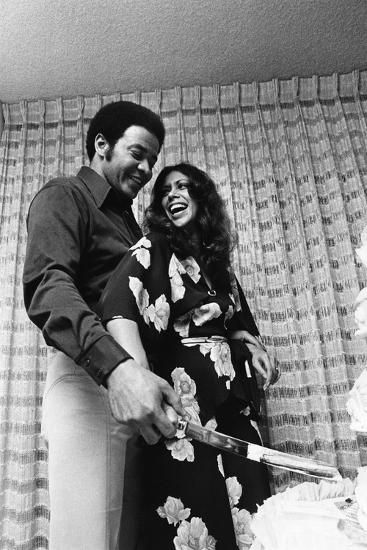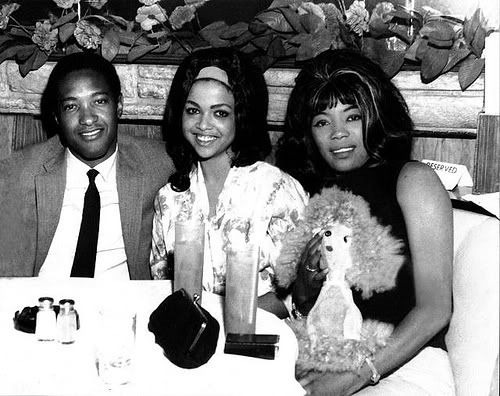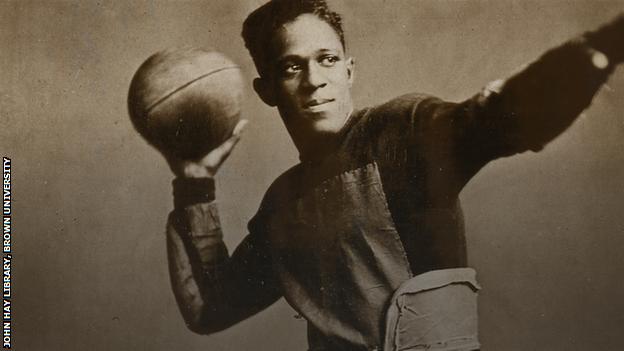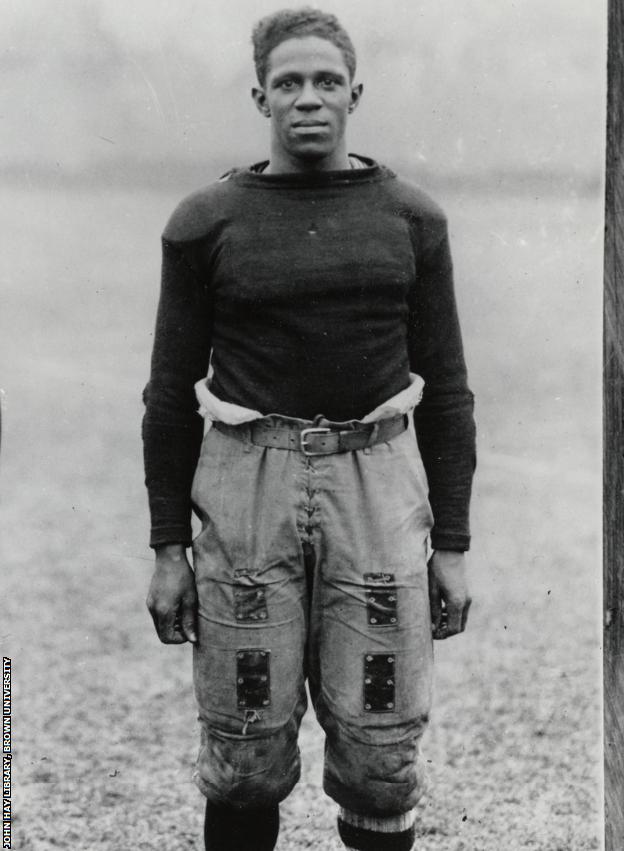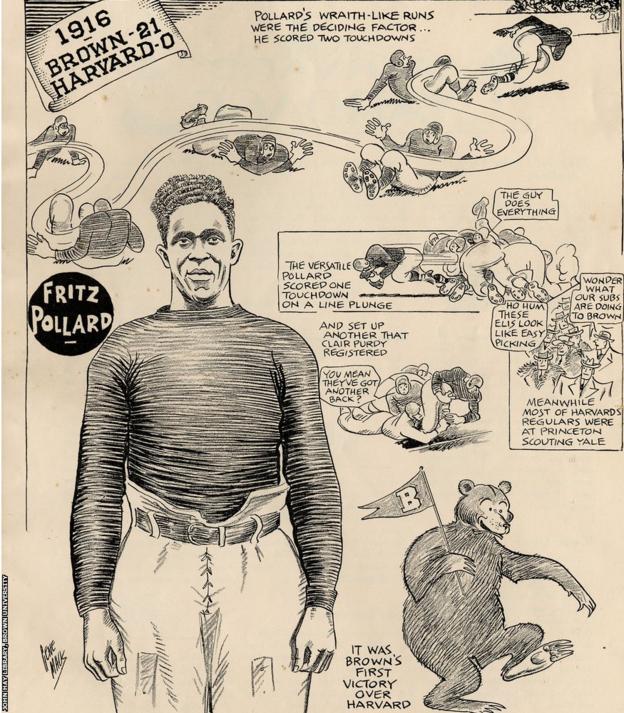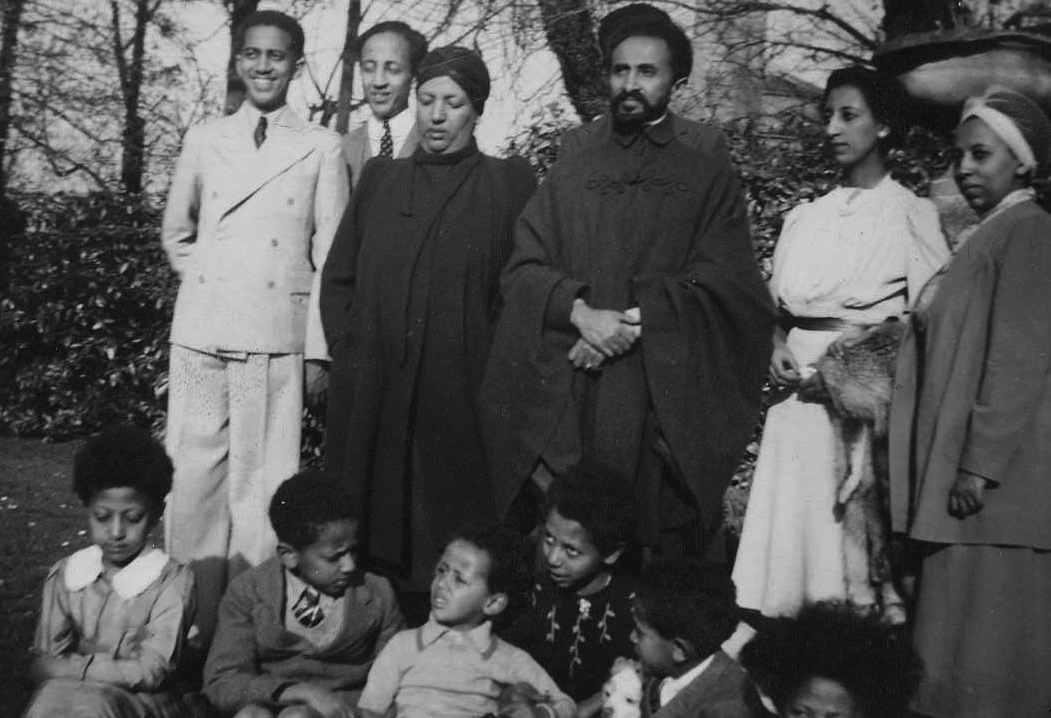Fritz Pollard was the first black quarterback in the NFL - and its first black coach
Fritz Pollard Jr suffered from Alzheimer's during the final years of his life, but just before he died there was a moment of clarity.
With his last words, spoken to his family in 2003, he said: "Don't forget your quest."
That quest had also been his own - to get his father into the US Pro Football Hall of Fame.
Some 27 years before Jackie Robinson broke the colour barrier in baseball, Fritz Pollard was the best player for the first NFL champions in 1920.
In a decade during which hundreds of African-Americans were still being lynched, he was playing a 'white man's game' when the NFL was in its brutal infancy.
In 1921, Pollard became the league's first black coach and in 1923 its first black quarterback. Yet after he retired, the doors he forced open were slammed shut by a 'gentleman's agreement' that saw African-Americans banned from 1934 until 1946.
By the time the NFL's second black head coach was appointed in 1989, Pollard, who died in 1986, had long been written out of the history books.
But his family's quest finally came to fruition in 2005 when - two years after his son's death - Pollard was inducted into the Hall of Fame.
Now, the power of his legacy is growing through an organisation that bears his name. The Fritz Pollard Alliance was in 2016 one of the first to support Colin Kaepernick, another black quarterback who has had to wait for the significance of his deeds to be acknowledged by his sport.
And yet, still very few NFL fans have even heard of Pollard. His is a story for too long left untold.
The Pollards were well known in Rogers Park, a suburb on the north side of Chicago. Pollard's Barber Shop was a popular neighbourhood hang-out and the Pollard boys played football for hours in the local park. They were the suburb's only black family.
Coming out of the Reconstruction era which followed the American Civil War, the Pollards wanted to live free from the racial oppression of segregation laws in the south and had moved from Oklahoma in 1886.
Mother Amanda was a respected seamstress while father John was a successful businessman. After escaping slavery, he had fought for the Union during the Civil War.
Born Frederick Douglass Pollard in 1894 - after the abolitionist leader Frederick Douglass - his nickname Fritz reflected Rogers Park's predominantly German make-up.
During high school Pollard was actually a better baseball player, but he knew he wouldn't be able to progress. At that time, black players were banned from the sport. American football was different.
His three older brothers all played the game and felt black players could do well - if they adhered to an unwritten code of conduct. They taught Fritz that he could never retaliate, despite the provocation he was sure to face.
Fritz was gifted with speed and elusiveness but he was small. When he began playing football aged 15 in 1909, he measured 4ft 11ins and weighed 89 pounds. His brothers decided they had to toughen him up. They knew he'd be targeted because of his size and skin colour.
Pollard, pictured circa 1919 in his kit to play a match
Pollard was one of only two African-Americans at Brown in 1915 and the first to live on campus. When he showed up for football practice that September, none of the players wanted him on the team.
One of his team-mates, Irving Fraser, later told Pollard's biographer Jay Berry: "When he was tackled, they'd all pile on him and see if they could make him quit. But Fritz would get up laughing and smiling every time. I never saw him angry."
'Bloody Wednesdays' were the scrimmages where reserve players could challenge starters for a spot on the team. When an opposing linebacker greeted Pollard with a deeply offensive racial slur, he responded by waltzing past him and into the end zone. Pollard asked to run the play twice more and scored two more touchdowns.
"We better let him play," the linebacker told the coach.
Aged 21, Pollard was only 5ft 8ins - small for football, even then. But the fleet-footed running back quickly became the team's star player, dubbed 'the human torpedo' because he ran so low to the turf. In his freshman year, he was the only black player in the Ivy League and Brown's win over Yale saw them earn an invite to the Rose Bowl in January 1916.
